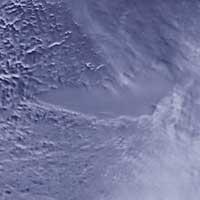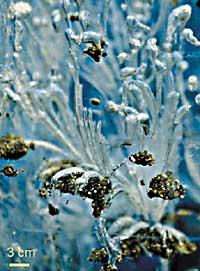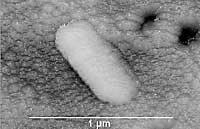Ibon de Vostok: hot debate on ice

Lake Vostok, located in Antarctica, has not received the sun for at least 15 million years. It is located under a thick layer of ice. Scientists are really interested in seeing what ecosystem there is in an environment that for so long has had no contact with the atmosphere. In addition, this will help them know what they can find in the ice helmets that have been found on Mars and other places off Earth.
In 1989, with the aim of detecting signs of climate change, scientists began collecting ice samples on the lake. When living beings were not searched, samples were not sterilized and then samples were not stored to avoid contamination. When they were 130 meters to reach the water, they stopped drilling to avoid contaminating the water.
Doubtful test

At this depth, ice is the autochthonous icy water of the lake and, after analyzing the sample, four groups of researchers discovered microorganisms. Then, they concluded that the lake is alive.
Other researchers do not agree at all. A Russian researcher lists the microorganisms present in the laboratory and the drilling tools, comparing them with those of the sample. Thus he has seen that, except three, all are introduced externally.
Lethal oxygen
In addition, Russian and French researchers believe that the lake is too toxic to life. In fact, from the air bubbles that are in the top ice of the lake has passed a lot of oxygen to the water, and since it cannot escape from there, the oxygen concentration is very high. Specifically, it is estimated that the oxygen concentration is 50 times higher than that of conventional lakes. At this concentration, oxygen is very toxic and, in addition, hydrogen peroxide and free radicals are also considered.

However, Americans have not accepted these calculations. According to them, the oxygen concentration does not have to be so high. On the other hand, in the lake there are no conditions to generate free radicals and, in addition, some microorganisms are able to produce antioxidants. Finally, the background can be anaerobic. This phenomenon occurs also in other lakes, so microorganisms could protect themselves from excess oxygen in deep waters.
Through the ice to the water
Perhaps all these doubts and controversies will end soon, as a Russian group plans to drill the ice to the water in the summer 2006-2007. Another international group, which also intends to reach the waters of the lake, will take very strict measures to ensure sterility, such as the use of a self-sterilized robot.

The Russians want to reach the lake waters by the same hole they made to obtain the first sample. This hole is already completely contaminated, so other researchers fear that the Russians will contaminate the lake.
But not only is the sterility of Lake Vostok at stake. The case is that this lake is a good laboratory to explore the ice helmets that are in space.
On Mars and several moons there is also ice, and the works Vostok is doing on the lake serve to investigate and test how to act there.
Buletina
Bidali zure helbide elektronikoa eta jaso asteroko buletina zure sarrera-ontzian











